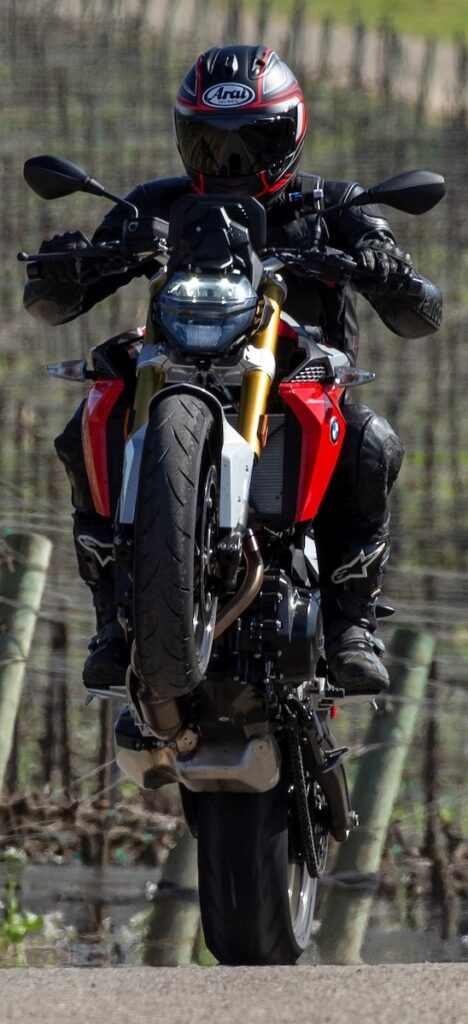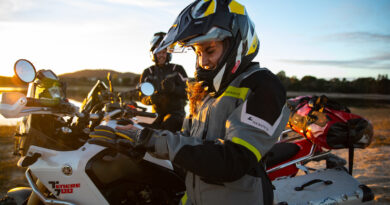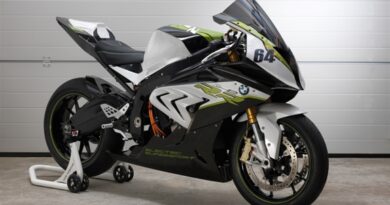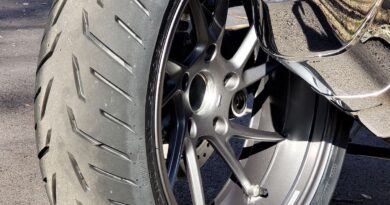Vanson Leathers: American-made, custom-tailored riding gear
Photos by AOD MOI unless otherwise noted. Featured image of Vanson patches by Liz Lord.

Mike van der Sleesen’s most enduring influence came from his mother. “We’d go shoe shopping, and she would always ask the salesman ‘Can these be resoled?’” Thus spawned the no-compromise construction and serviceability aesthetic of Vanson Leathers.
Vanson (a contraction of the last names of van der Sleesen and his original, but brief, arrangement with a partner) was founded in 1974 when van der Sleesen opened Vanson Leathers on Thayer Street in Boston, where it both produced and sold leathers from 1975 to 1988.
In 1987, Vanson opened a production facility in Fall River, historic Massachusetts’ garment manufacturing town. Fall River’s locations eventually unified with 77,000 square feet of production, warehouse, and showroom in a mill once powered with water. Unlike the hydro-powered mills of the past, Vanson has endured changes in consumer tastes and the vagaries of the global economy to remain standing as one of the only U.S. manufacturers of riding gear. Ten years ago, Vanson attempted to set up an offshore production facility, but it was eventually shuttered, leaving all production on the fifth floor of the mill in Fall River.

Vanson has a reputation among serious racers for providing the toughest leathers on the market. Vanson is known for sporting leading-edge safety and ventilation features (perforated, thick, and durable leather; hard armor; airbags), and absorbing enormous amounts of punishment. Massive crashes regularly left riders both unharmed and, more importantly for club and semi-pro racers, with leathers intact and ready to race. Vanson also won loyal customers through their policy of servicing their products. A Vanson racing suit could be used for years, even with regular crashes, by sending the leathers back to Vanson in the off-season for servicing.
Vanson jackets became status symbols for non-motorcycle riders as well. Vanson even had to discontinue using the trademark “Vanson” on their packing tape for UPS shipments because so many of their jackets were disappearing into a shipping void between Fall River and the customer. New York City was particularly notorious for becoming a black hole for Vanson jackets when shipped through normal shipping channels. However, the “Made in America” label and uncompromising high quality led to contracts and signature series jackets for export markets.

I first fired up my BMW R 75/5 basket case reanimation project in the shed behind my parent’s house in 1984. I scraped together money from after-school jobs to secure the pile of parts; after many (MANY!) long hours of trial and error (being 17, I had never really done any wrenching before), I was able to get the bike up and running. Spending all my available funds on building the toaster tank Slash 5, all additional income went to paying for fuel and camping supplies to enable my 48-state tour over the next two summers. My riding gear, such as it was, consisted mainly of army surplus bits.
While alternately pursuing higher education and frostbitten hands, my Slash 5 and I spent the next four winters in Massachusetts. Although my school was in the western part of the state, I would occasionally travel east. On one of those trips, I made my way to the original Boston Vanson leathers store for the first time and was exposed to both 1) the garment industry, and 2) real riding gear.

I started racing with about as much money as I had when I started touring: a $50 van (I rebuilt the bottom end lying underneath it in a parking lot) and a $350 motorcycle. It was a huge milestone for me when I finally saved up enough money to buy my first set of custom-tailored Vanson racing leathers in 1992. Since then, I have owned a lot of riding gear and have had leathers built by different companies out of different materials, but I have yet to own a set that able to stand the tests of time and abuse like the Vanson.
My riding falls into five broad categories: enduro (dirt), road racing (tracks), street (which somehow always includes dirt roads), magazine test, and urban. Riding a motorcycle over wet logs on a single-track trail being what it is, I wear textile with a lot of body armor when on the dirt bike. For the rest of my riding, I reach for leather 98% of the time.

Our “street” rides are usually rain-or-shine multi-day affairs in the mountains of West Virginia. The search for the smallest roads we can find sometimes means we end up on logging roads with notable landmarks giving rise to names like Sand Hill, Rubble Pile, and Babyhead Climb. These rides are usually on motorcycles that round up to sport bikes, not dirt bikes.
My road racing background biases me towards riding in armored leathers (including back protector), and my crew and I all wear two-piece, zipped together Vanson leathers for those rides. My favorite suit is a super-motard racing suit. These have a ton of perforation and a lot of Cordura flex panels, but full armor and Velcro on the knees in case I want to wear sliders. If it’s cold, I put on a rain suit or under layers; if it’s hot, it breathes well. On occasion, we’ve had ride participants who wear full synthetic gear. I understand the appeal of the plastic fabrics, but I have also seen a friend trapped under a motorcycle with a hot header pipe melting her adventure pants into the flesh of her butt. Freak accident? Sure! She’s ordering leathers now, though it is like closing the gate after the horse has burned its butt.

I am also a bit of an anomaly in that I wear two-piece leathers on race tracks. Although that used to be common, it is almost unheard of now. As an endurance racer, I constantly switch roles between riding, crewing, wrenching or captaining. The two-piece setup allows me to change roles faster in the pits. That paradigm has carried over to my magazine testing of track suits.

Vanson, of course, has a complete selection of prêt-à-porter jackets, pants and suits. They have top-quality textile riding gear and leather, and they have many many styles. Some are made for riding, some are made for posing. If in doubt, talk to someone there. Unless you are a starving student replacing con rod bearings on an E100 while lying in a parking lot, get tailored gear.
I know, I know! It’s a little stressful and a bit inconvenient, but there are not too many places to get tailor-cut gear, and the difference between off the rack and custom cut is huge. Also, once you’ve jumped into the custom domain, you can get any color of leather or Cordura, reflective piping, graphics, initials, etc.

Our group favorites are either the super-motard two-piece or the V932 two-piece race suit. Depending on if the person runs hot (lots of perforated leather) or cold (more solid leather), we typically spec our suits with CE armor (don’t forget the back protector), dipped back waistband (so the jacket can be worn separately), scooped out ankles (we rock the pants-in-the-boots look and this reduces bulk in the boot), Kevlar cuffs (less bulk inside gauntlet gloves) and all the expander panels available. Remember also to specify if you want any pockets. I usually do two inside the jacket.
One thing I pay attention to is the cut of the gear for the riding position. I usually ride in a crouch, so I like the knees very bendy. Some of my female riding companions go with a slightly looser cut so they can wear layers underneath. I also rock Velcro on the knees if I need to wear knee sliders, but those can be left off if you are not going to a track. Do not be alarmed if your suit feels awkward when you first put it on. It is not meant for weddings; it is meant for riding. It will feel right on the bike.
Again, given my cultural bias towards racing, I usually go with a ventilated/perforated leather suit. If it is chilly, I’ll wear a liner (Vanson also sells nice liners) and wind-blocking tights. If it gets really cold, I’ll put on a rain suit.
The showroom in Fall River, Massachusetts, is worth a trip to get measured and discuss your functional goals for your riding gear. If that’s too far, you can get measured wherever you are and then contact Matt Silva at Vanson to discuss precisely what you want in a riding suit. Plan ahead, because each suit is made to order and it will take a couple of months to get your suit.
Custom, top-quality, U.S.-made riding gear isn’t cheap, but riding a lot will average down your gear cost per mile.
If you want to see more of the Vanson factory, check out Part 1 and Part 2 of Melissa and Luci getting their handbags manufactured at Vanson – below! Subscribe to the AOD channel while you’re at it.
Part 1
Part 2




